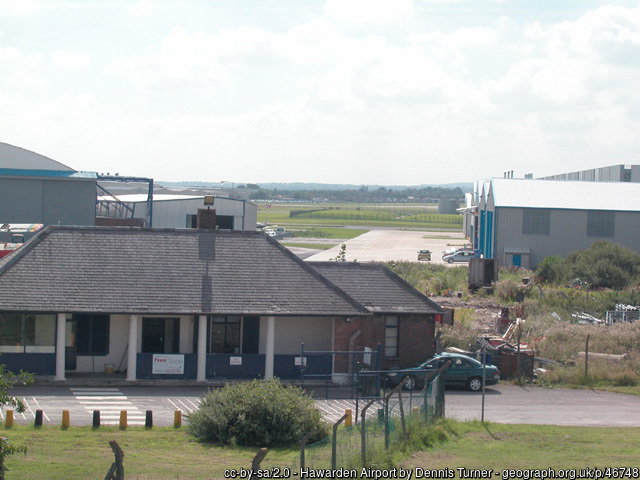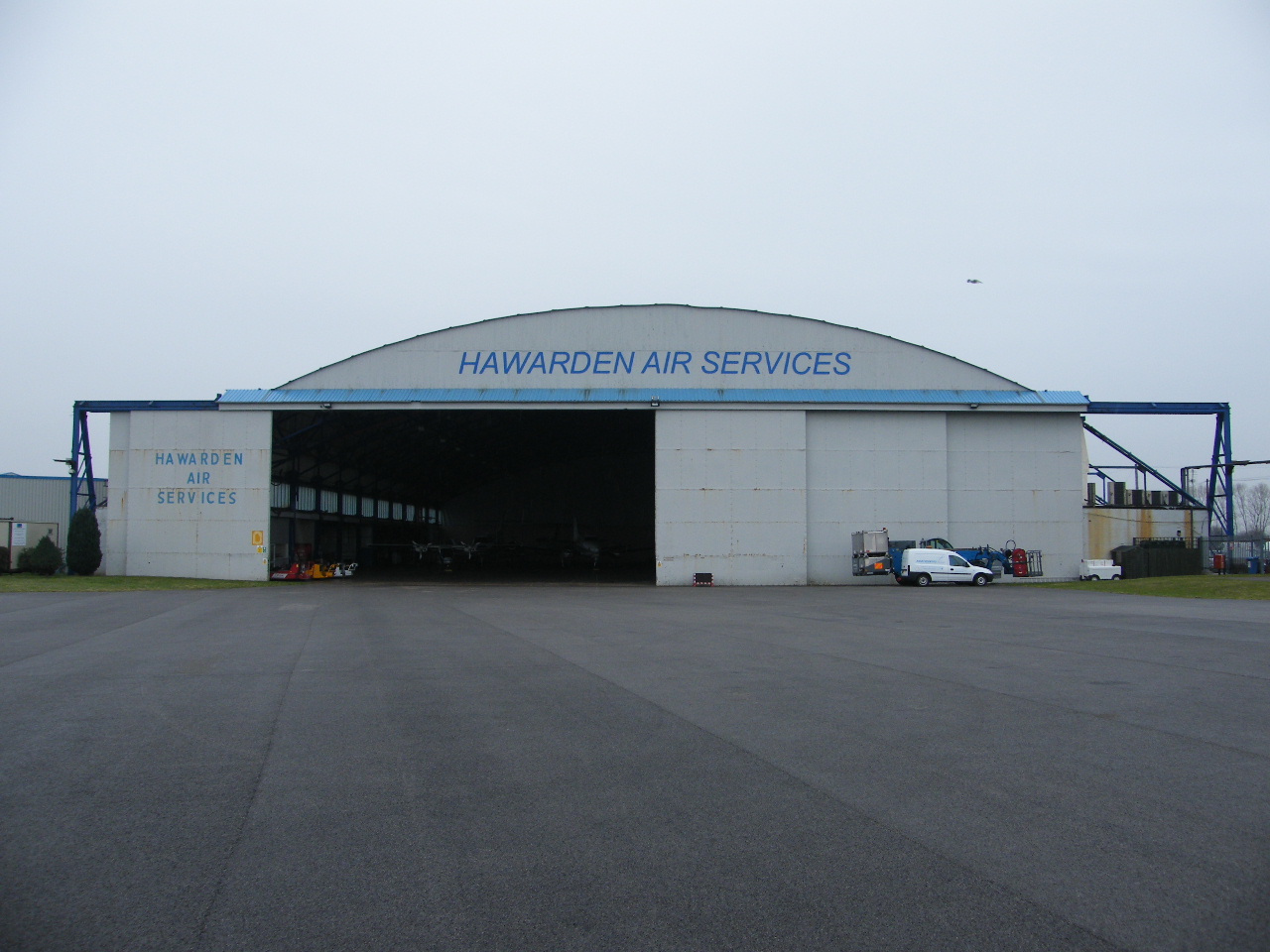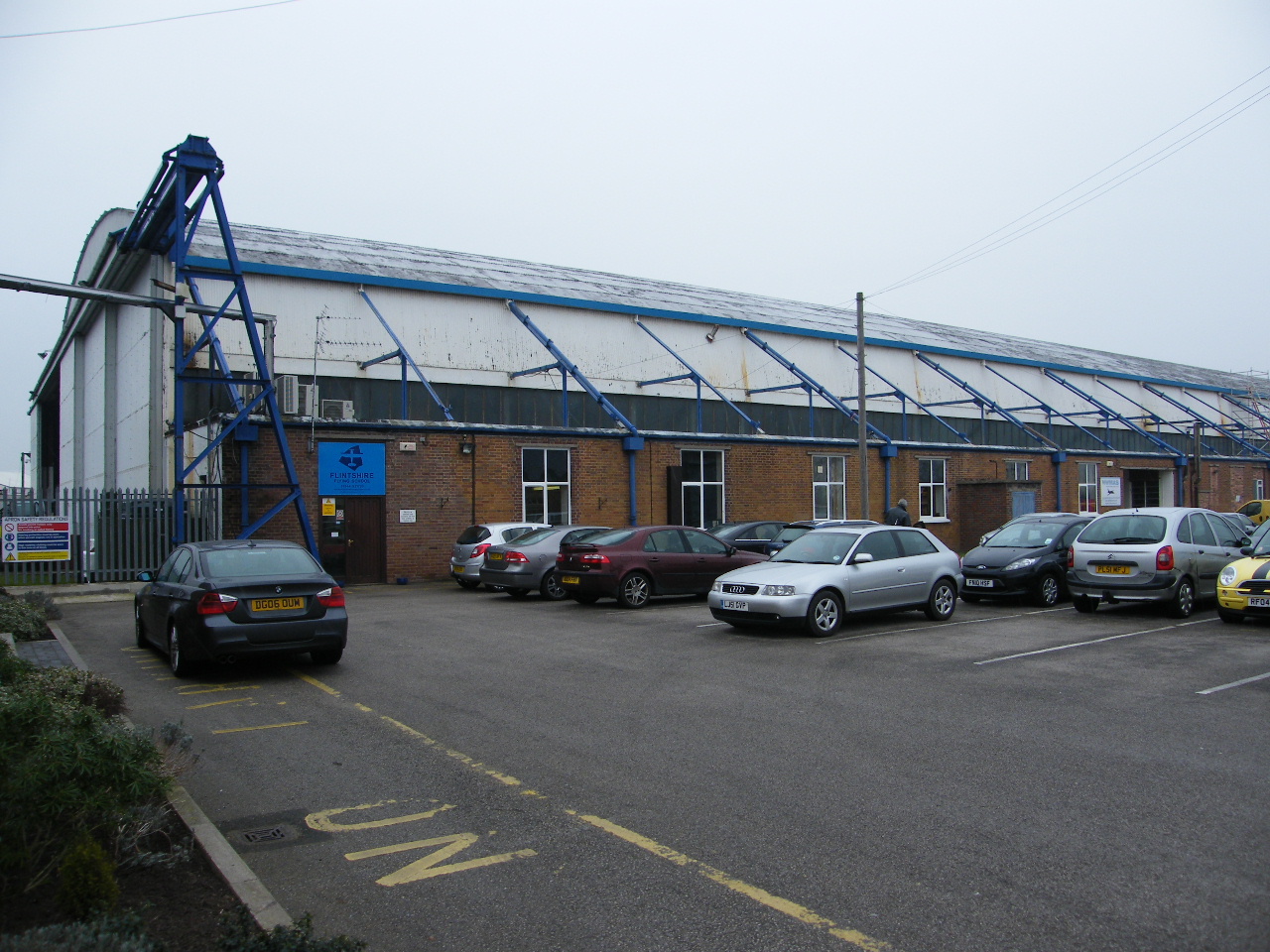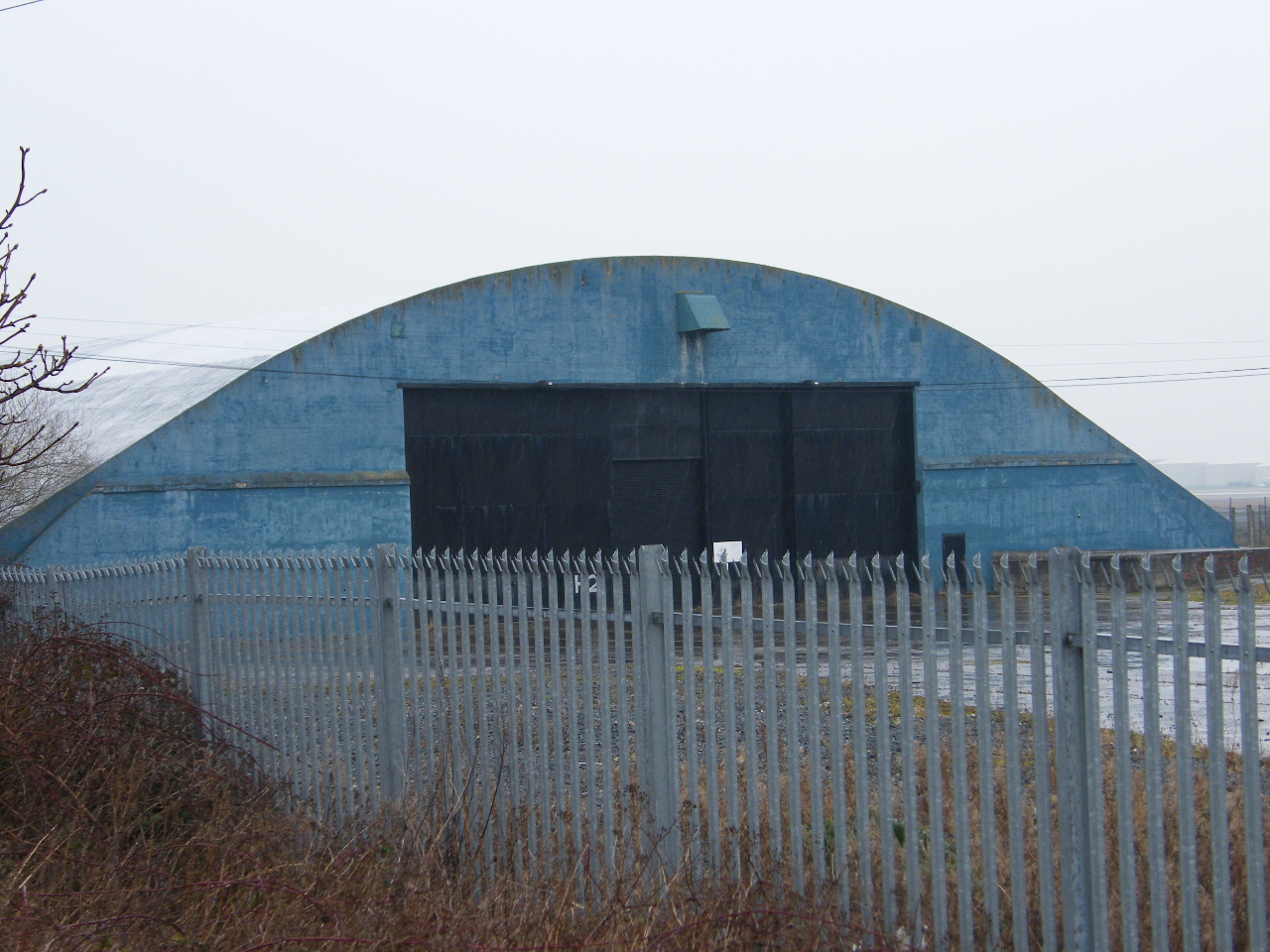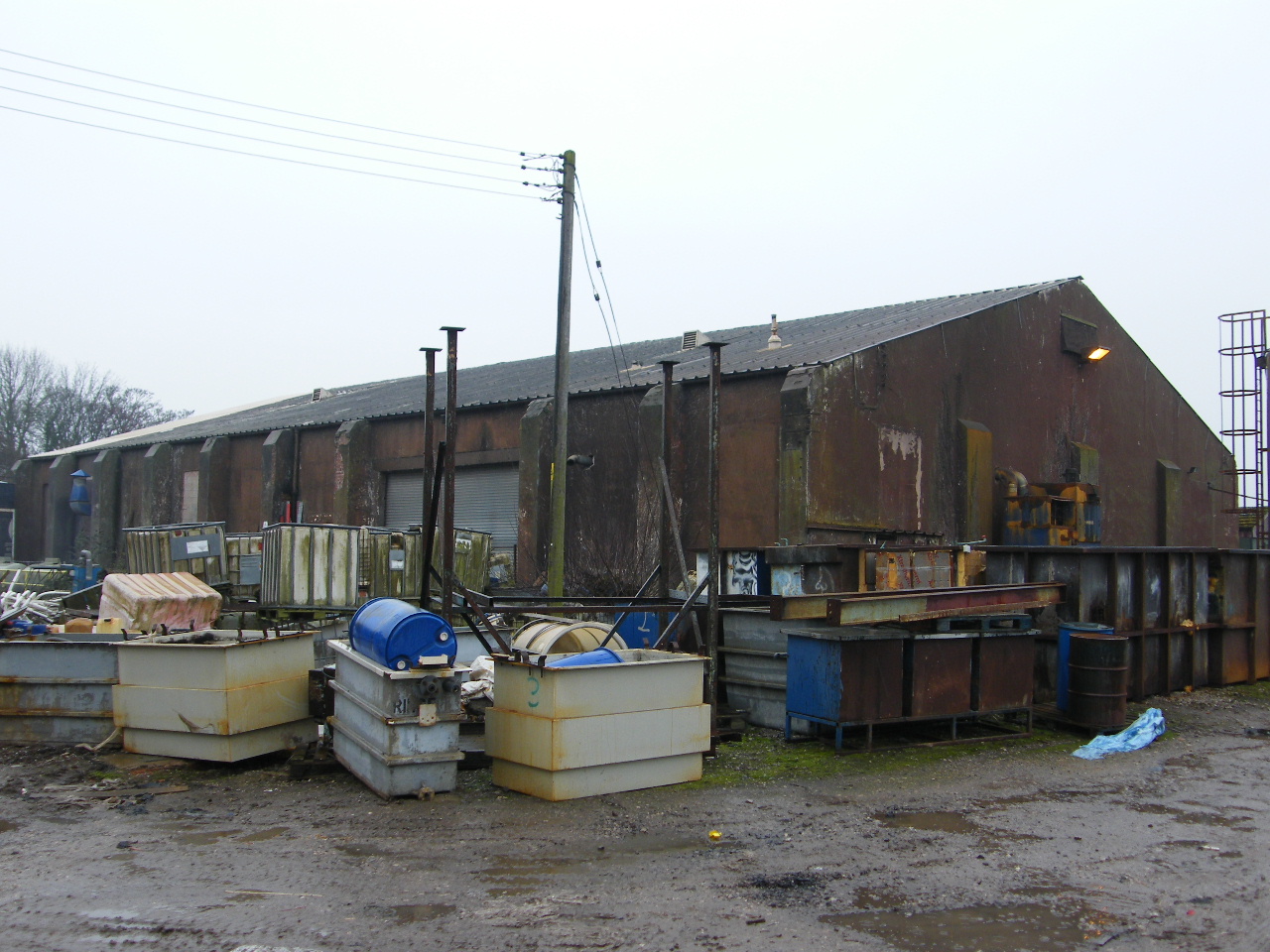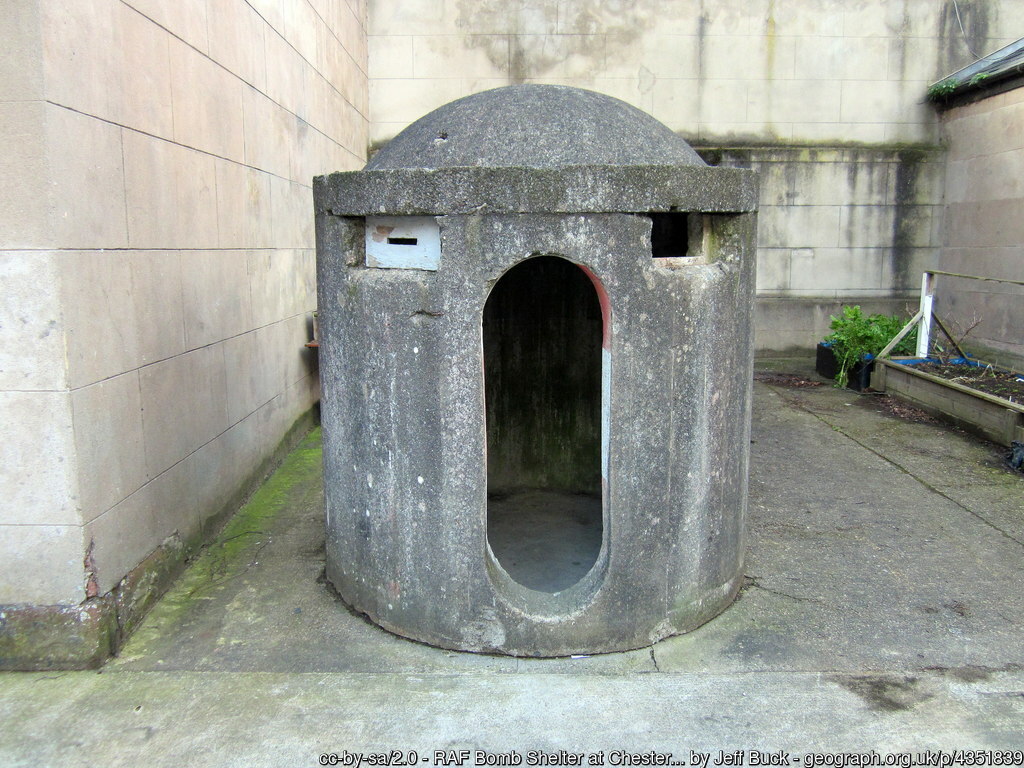Hawarden (Bretton) (Broughton) (Chester)
Did you know?
"Factory workers at Broughton raised £15,000 to sponsor a Vickers Wellington aircraft built at the factory in 1940. Named the ‘Broughton Wellington’, the aircraft was destroyed a month and a half later following a take-off accident at Newmarket Heath on 18 December 1940 while being operated by No 99 Squadron.
"| Also known as: | Chester Hawarden Airport / Hawarden Aerodrome / Hawarden Airport / RAF Bretton / RAF Hawarden / RAF Station, Hawarden |
| County: | Flintshire |
| Current Status: | Aviation / Industry |
| Date: | Opened 1930s |
| Current Use: | Active |
| Used By: | RAF (main user) / FAA / Civil (main user) |
| Landing Surface Types: | Unpaved, later paved |
| Aircraft Roles: | Aircraft ferrying / Aircraft manufacture (main role) / Aircraft preparation/storage (main role) / Airliner / Anti-aircraft co-operation / Communications / General aviation / Naval aviation / Trainer (main role) |
Hawarden began as a Relief Landing Ground for nearby Sealand in the 1930s, then being known as Bretton. The site was chosen for the development of an aircraft factory as it was deemed far enough away from Germany to avoid air attack. Construction began in 1937 and the facility opened in 1939 while work continued. One short runway had been built by 1939 and two more were completed by 1941.
Hawarden was home to No 48 Maintenance Unit (MU) during the Second World War, an aircraft receipt, storage and disposal unit. Although No 48 MU remained at Hawarden until 1957 it was particularly busy during the war and a number of additional units were brought in for support.
The Air Transport Auxiliary (ATA) was also present at Hawarden from 1940 and a variety of aircraft were ferried to locations across Britain by the ATA pilots. A few units such as No 4 Ferry Pilots Pool (FPP) carried out this work until ferry flying ceased in 1957.
The airfield was also used for flying training and No 7 Operational Training Unit (OTU) formed at Hawarden in June 1940 to train fighter pilots. After becoming No 57 OTU in November 1940 the unit left Hawarden for Eshott in November 1942. This was primarily due to their flying disrupting flight-testing of aircraft by Vickers. However, this was far from the end of flying training at Hawarden. No 41 OTU soon moved in and was the RAF's main Army co-operation training unit, flying aircraft such as the Hawker Hurricane and North American Mustang. As the war drew to a close training reduced and the OTU reduced in size and eventually left for Chilbolton in March 1945. Although quickly replaced by No 58 OTU, this unit disbanded in July 1945.
Over 5,500 Vickers Wellingtons as well as later Avro Lancasters were built at the factory during the Second World War before aircraft production ended in 1945. Aircraft construction did however return to the factory in 1948 through de Havilland building aircraft such as the Dove, Hornet, Mosquito and Vampire. Through the subsequent amalgamation of British aircraft manufacturers de Havilland became part of Hawker Siddeley and later British Aerospace (BAe). The HS 125 business jet, known as the Dominie in RAF service, was one of the most successful post war aircraft produced at the site. The airfield’s connection to aircraft manufacture continues to this day (as of 2015) with Airbus UK based at the airfield. Since 1977, wings for various Airbus aircraft have been produced at Hawarden (Broughton) before being transported to Airbus’ final assembly plant in Toulouse.
Other post-war users of the airfield included No 186 Gliding School, which moved in in 1952. This unit became No 631 Gliding School in 1955 and moved to Sealand in 1963. When the RAF left Hawarden on 31 March 1959 the airfield was left in the hands of de Havilland, as detailed above. Hawarden is now sometimes known as Chester Hawarden Airport and in addition to Airbus, a number of smaller companies and individuals continue to operate from the airfield.
The following organisations are either based at, use and/or have at least potentially significant connections with the airfield (as at 01/09/2011):
- Airbus UK
- Airbus UK Broughton FC
- Alpha Flight Training
- APEM Ltd
- Aviation Park Group Ltd
- Broughton & Bretton Community Council
- Broughton Library
- Cheshire Classic Cars Ltd
- Chester Handling Services
- Chocks Away Diner
- Cokebusters Ltd
- Duratrust Ltd
- Eurocopter UK Ltd
- Flintshire Flying School
- Green-Man Tech Ltd
- Hawarden Air Services
- Hawarden Library
- Hawker Beechcraft Services
- Jefferson Air Photography
- Metal Improvement Co LLC
- North Wales Military Aviation Services
- Paratech Engineering Solutions Ltd
- Ramsgill Aviation
- Recyclate Limited
- Rexylon
- Spacerepair Ltd
- Strikemaster Flying Club
- Weatherwise Special Projects Ltd
Notable Past Associated Organisations:
- British Aerospace
- de Havilland Aircraft Company Limited
- Hawker Siddeley Aviation
ABCT would like to thank the Royal Commission on the Ancient and Historical Monuments of Wales for the use of their images. Find out more here: www.rcahmw.gov.uk and search their database here: www.coflein.gov.uk.
Main unit(s) present:
- No 3 Aircraft Delivery Flight
- No 3 FP ATA
- No 3 FPP
- No 4 FP
- No 4 FPP
- No 4 (Home) FU
- No 5 SFTS
- No 7 OTU
- No 9 (Service) FPP
- No 41 OTU
- No 47 MU
- No 48 MU
- No 57 OTU
- No 58 OTU
- No 63 Gp Comm Flight
- No 63 (Western & Welsh) Group
- No 63 (Western & Welsh Reserve) Group
- No 173 Sqn
- No 186 GS
- No 192 GS
- No 577 Sqn
- No 631 GS
- No 808 Sqn
- No 885 Sqn
- No 3210 Servicing Commando
- Air Wales
- de Havilland (Chester) Flying Club
- Hawker Siddeley (Chester) Flying Club
- Home Command Modified Officer Cadet Training Unit
- Starways
- Station Flight, Hawarden
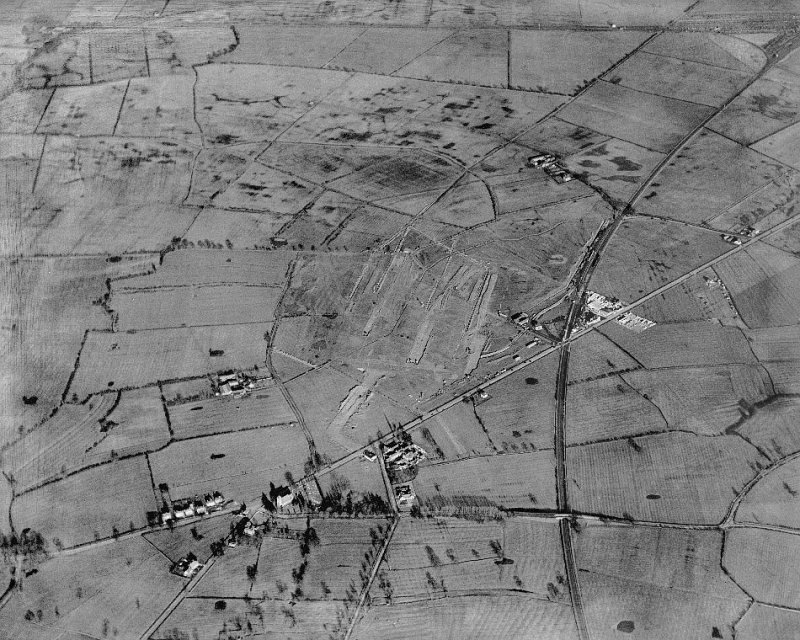
Aerial view of Vickers-Armstrong Ltd. works - Broughton airfield under construction, 26 January 1939. © Crown copyright: Royal Commission on the Ancient and Historical Monuments of Wales: Aerofilms Collection.

High altitude view of Vickers-Armstrong Ltd. works - Broughton airfield under construction, 26 January 1939. © Crown copyright: Royal Commission on the Ancient and Historical Monuments of Wales: Aerofilms Collection.
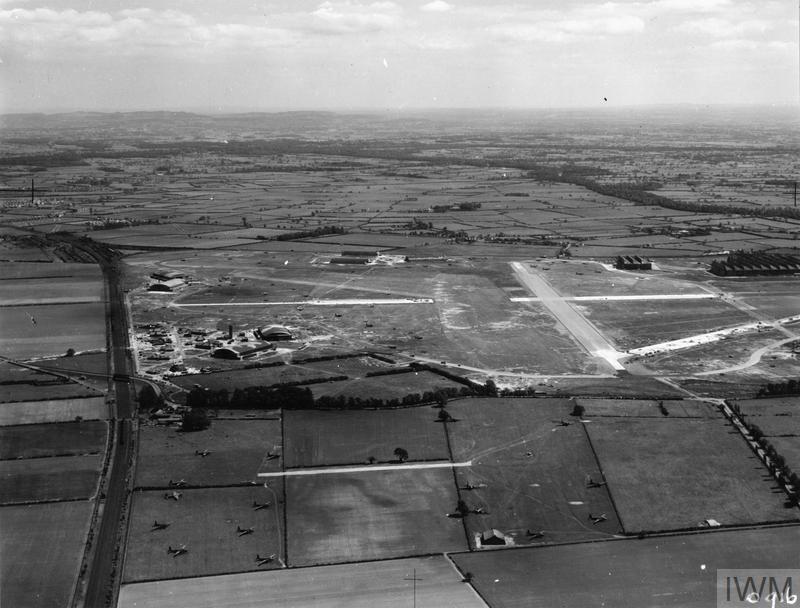
Aerial photograph of Hawarden, c. 1941-42. © IWM (HU 93051)

A Wellington under construction at the Vickers 'shadow factory' at Hawarden, 1 June 1942. © IWM (CH 5987)
| Decoy Airfield(s): | |
| Satellite Landing Ground(s): |
